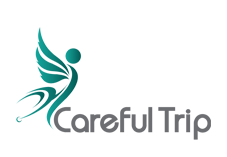
If someone guesses your age, how would it be? Do you look more than your age or less than it? Signs of aging on everyone’s face can come from very young ages depending on the care given to the skin.
Is it essential for you to look less than your age and to shine among your age mates?
If the answer is a big YES, then you must be familiar with Rhytidectomy, facelift surgery, and different kinds of it.
Based on the results of the most extensive analysis on facelift surgery published in the US National Institute of Health, “Rhytidectomy is a very safe procedure when performed by board-certified plastic surgeons. Nevertheless, risk factors for complications are identified, several of which can be affected by surgeon’s choice of surgical venue, additive procedures, duration of operation, and type of anesthetic.”
So, let’s keep up with this article to complete your data on this survey to make decisions like a professional better.
What is Rhytidectomy or facelift?
A facelift also called a rhytidectomy, is a surgery that tries to fix the soft tissues of the face to make it look younger and more put together.
In the past, because people feared cosmetic surgery and doctors kept their practices secret, the treatment was not as well-known as it is now.
Eugene von Hollander did the first facelift in 1901. He cut away, reattached extra skin, and did a little bit of undermining.
After World War I ended in 1918, plastic surgery and other procedures to fix damage became more common. After World War II, severe facelifts became possible because of antibiotics and anesthetics.
In 1969, Tord Skoog, a Swedish plastic surgeon, was the first to describe a facelift by separating the superficial fascia.
Mitz and Peyronie researched anatomy and came up with the name “superficial musculoaponeurotic system” (SMAS) for this fascia. This led to the “SMAS rhytidectomy” procedure. Plication involves folding the SMAS and suspending it. In contrast, imbrication involves cutting away extra SMAS, closing the gap, and breaking the fascia.
Hamra’s “tri-plane rhytidectomy” from 1983 lifted the skin under the neck to improve the neck’s shape.
These methods don’t help with the nasolabial fold or soft tissue laxity in the middle of the face. Hamra came up with the idea of “deep-plane rhytidectomy” in 1990.
He wanted to cut the zygomaticus muscles and ligaments to move the malar fat pad and eliminate the nasolabial fold (MLF).
In 1991, Hamra developed the “composite rhytidectomy” to include the orbicularis oculi muscle in the dissection. This improved the profile of the eyelids and cheeks and repositioned the SOOF to fix hollowing caused by previous.
There are different facelift treatments for things like jowls, nasolabial folds, platysmal banding, and the length of the scar.
Rhytidectomy is simply one approach to curing an aging face. It restores soft tissue and reduces skin. The patient’s desired appearance determines the facelift.
To create realistic expectations for surgery, the pre-operative consultation must evaluate skin quality, rhytids, scars, fat descent and atrophy, and bone resorption. To prepare the patient and surgeon, face asymmetry, form abnormalities, and hairlines must be noted in frontal, side, oblique, and base views.
For jowls, drooping necks, or platysmal bands, a SMAS rhytidectomy and cervicoplasty may be recommended. A deep-plane rhytidectomy or additional mid-face lift may be needed if you have several deep MLFs or malar fat descent. Composite Rhytidectomy with SOOF relocation improves lid-cheek junctions.
Thus, the patient’s appearance concerns will dictate the procedure. Rhytidectomy may be combined with brow lift, blepharoplasty, cervicoplasty, subcutaneous fillers, fat transfer, and laser resurfacing to rejuvenate the face.
For more information, read:
Different kinds of Rhytidectomy or facelift
Facelift or Rhytidectomy can be done in many different ways, depending on which parts of the face and neck are fixed. Some other kinds of rhytidectomy surgeries are:
-
Traditional Facelift:
During a traditional facelift, the cut usually starts at the temple hairline, goes around the ear, and ends in the lower scalp. Fat can be sculpted or moved around in the face, jowls, and neck, and the deeper layers of skin and muscles are often lifted simultaneously. Skin is redraped over the new, higher shapes, and any extra skin is cut away.
People with moderate to severe facial aging signs who want to look their best are usually advised to have this surgery.
- SMAS facelift:
The superficial musculoaponeurotic system, or SMAS, is the layer of tissue or membrane that connects your face and neck muscles to your skin. It has muscles, fibers, collagen, and fat. As you get older, your skin and SMAS lose their elasticity.
Because of these changes, the cheeks hang down along the jawbone, there is extra skin, and many people get a “double chin.” The fat on the cheeks will also move forward, making the lines on the sides of the nose that lead to the mouth deeper (also causing smile or laugh lines).
A SMAS facelift removes visible signs of aging by tightening the muscles, eliminating fat, and cutting away extra skin on the lower two-thirds of the face.
Most people still look 10 to 15 years younger after the procedure, but 10 to 15 years later, the signs of aging start to show.
People who could benefit from a SMAS facelift:
– Are all doing well health-wise;
– Have realistic expectations about how the procedure will go;
– Are 50 years old or older;
– Have sagging skin on your face, but keep at least some elasticity in the skin;
– Want to get rid of one or more of the signs of aging we talked about above;
– Don’t smoke or are willing to quit before surgery and when they are recovering (smoking can negatively impact healing and final results).
-
Deep plane facelift:
The problem with many modern facelifts is that they make a face look tight and full. The deep plane facelift solves this problem. The main idea behind the deep plane facelift is that it only lifts under the muscle layer, leaving the skin attached to the muscle layers so that it can never look too tight.
It also lifts the cheeks by releasing the points on the face that hold it together in the deep plane. This means that there is no need to add fat or filler.
-
Mid-facelift:
For a mid-facelift, minor cuts are made near the hairline and ear. An endoscopic camera is put in through these minor cuts to tighten and smooth muscle.
The procedure also involves lifting the fat pads (malar pads) on your cheeks to make your cheekbones look higher.
Once the fat pads are in the right place for your face, they are stitched in place and the cuts are closed. About two hours are needed for the whole process.
Several doctors do the mid-facelift, but it is a technically tricky surgery. Some doctors aren’t pleased with the procedure because you have to know a lot about the body and be ready for things to go wrong, says Elliot Jacobs, MD, a plastic surgeon at Beth Israel Hospital in New York.
“Some say it’s too complicated, but if you know what you’re doing, it’s not.”
-
Mini-facelift
A mini facelift is the same as a traditional one, but with some changes. In the “mini” version, a plastic surgeon makes minor cuts around your hairline to help lift the lower half of your face and fix sagging skin.
Both are invasive cosmetic procedures that use cuts to get rid of and tighten sagging skin.
If you want to reach these goals with fewer cuts and less extra skin to get rid of, you might be a good candidate for a mini version.
Even though it’s a “mini facelift,” it’s still an effective procedure. Before getting any cosmetic surgery, it’s essential to consider all the pros and cons.
- Cutaneous (skin) facelift
If all that’s needed is some of the patient’s facial skin to be taken off, a cutaneous facelift is a tried-and-true method. A lengthy incision is done along the hairline, and the surgeon will remove loose skin to tighten and smooth facial skin. The procedure does not affect the underlying muscles of the face.
There will be less invasiveness and recuperation time with this procedure. Still, the effects will not be as long-lasting or dramatic as those of classic facelift operations that modify the underlying muscle. A more youthful look results from a cutaneous facelift, which results in tighter, more toned skin.
Why doing Rhytidectomy in Iran is the most reasonable choice?
A wide range of options is available to the surgeon doing a facelift. The first and foremost is to choose a reliable cosmetic surgeon. Rhytidectomy in Iran is one of the most popular surgeries done by qualified board-certified surgeons in the country’s most equipped clinics and hospitals.
Some of the reasons patients typically choose Iran and CarefulTrip for their surgeries are:
- VIP hospitals with the best services and the latest technologies
- Lowest prices among other countries
- High-skill surgeons and doctors
- Being among the top 10 countries of ignorant plastic surgery
- First in West Asian maxillofacial surgery
- Speed of health care and its process
Many people choose to go to Iran when it comes to safe, effective, and low-cost facelift surgery. Many of them decide to have Rhytidectomy in Iran with CarefulTrip as it is the most reliable company that can connect you to the best surgeons and hospitals in Iran.
Conclusion
Facelift or Rhytidectomy is a popular surgery for people who wants to look younger and more excellent. Doing a rhytidectomy in Iran is a reasonable choice for people who care about their health. Also, good care is a necessary factor for them. CarefulTrip is a trusted company among its patients who believe they deserve the bests.
For more information, read:

